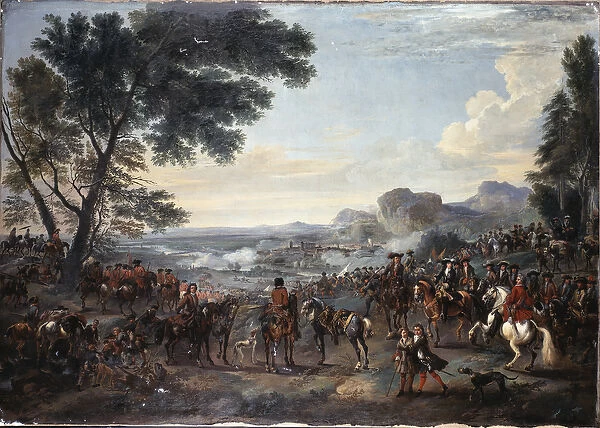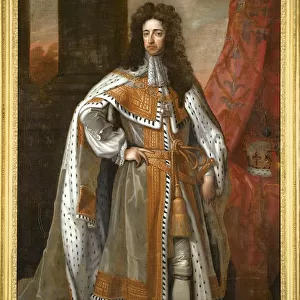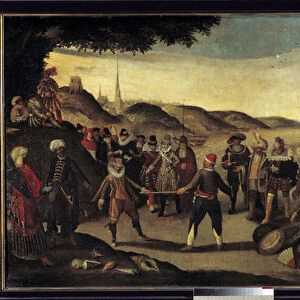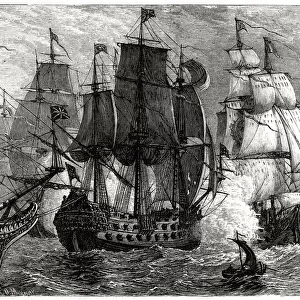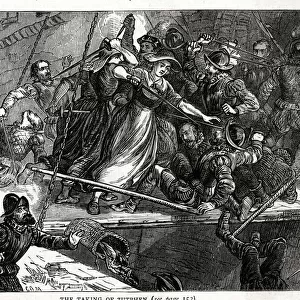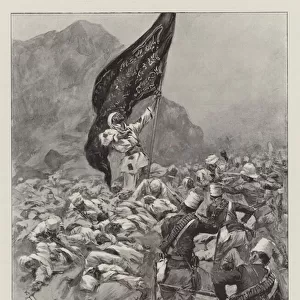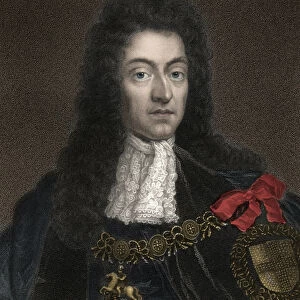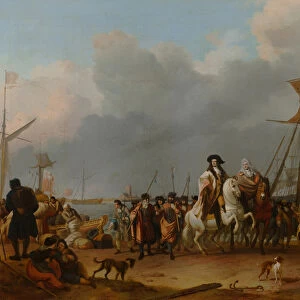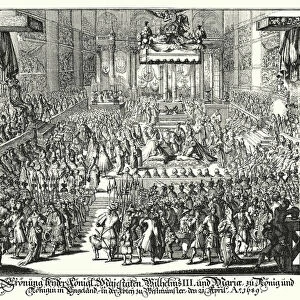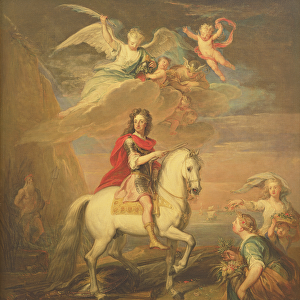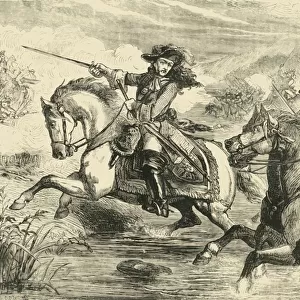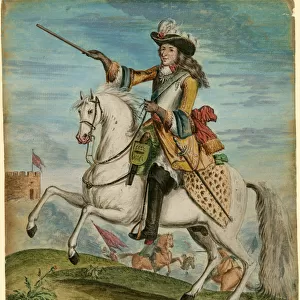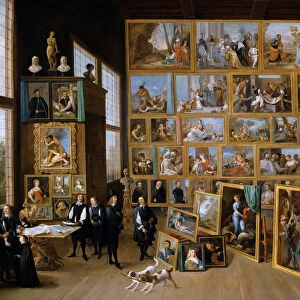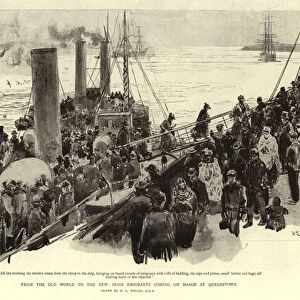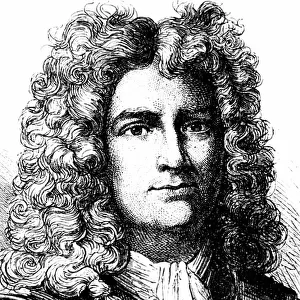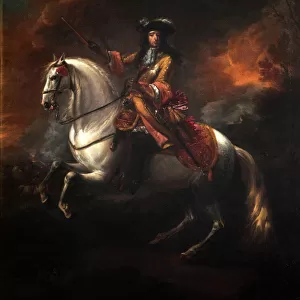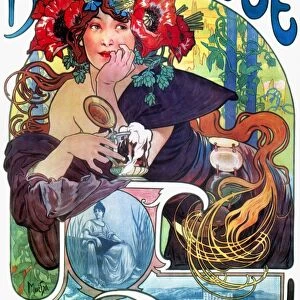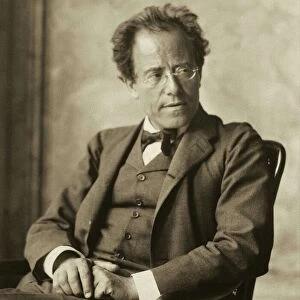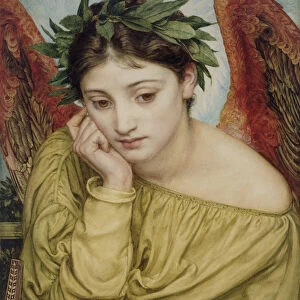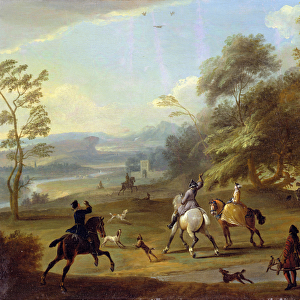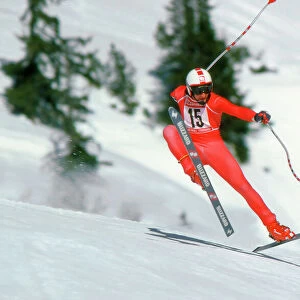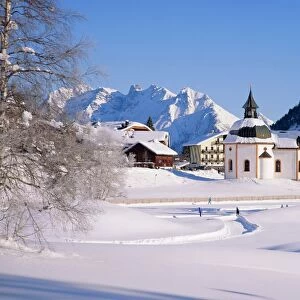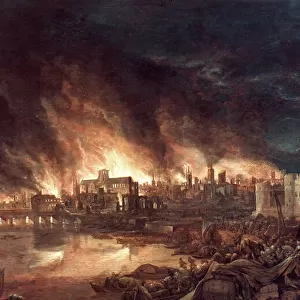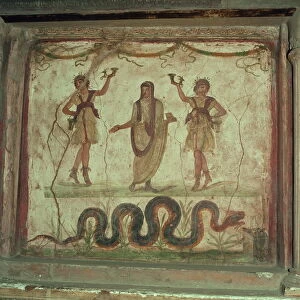Home > Arts > Artists > I > William Ireland
King William III and his army at the Siege of Namur, 1695 (oil on canvas)
![]()

Wall Art and Photo Gifts from Fine Art Finder
King William III and his army at the Siege of Namur, 1695 (oil on canvas)
5920458 King William III and his army at the Siege of Namur, 1695 (oil on canvas) by Wyck, Jan (1640-1700); National Army Museum, London; (add.info.: King William III and his army at the Siege of Namur, 1695.
Oil on canvas by Jan Wyck (1645 circa-1700), 1700 circa.
A rare contemporary depiction from the Nine Years War (1689-1697), this painting has been hailed as Jan WyckAs masterpiece. It is also unfinished, possibly left incomplete on the artistAs death, and providing an interesting insight into the way he constructed his paintings.
Situated at the confluence of the Rivers Sambre and Meuse to the east of Charleroi in the Low Countries, the city of Namur occupied a key position for control of the Austrian Netherlands. Previously fortified by the great Dutch engineer, Baron Menno van Coehoorn (1641-1704), Namur was considered to be one of the strongest citadels. However, to the humiliation of King William III (1650-1702), in 1692, the French besieged and took the city in 27 days. The cityAs defences were then improved by the French King Louis XIVAs great engineer, Sebastien le Prestre de Vauban (1633-1707).
Although it was generally considered impregnable, in June 1695, the allied army of King William III, assisted by Coehoorn, laid siege to the stronghold and retook it after two months. The Royal Regiment of Ireland led the storming of the citadel, which resulted in its capitulation on 1 September.
The taking of Namur, made famous in literary history by Uncle TobyAs mysterious A woundA in Laurence SterneAs novel, Tristram Shandy, was the most ostentatious British achievement in the Nine Years War. However, the regiments that took part in the siege did not receive Namur as a battle honour until 1910, when it became the earliest action to be commemorated on British Army colours.); eNational Army Museum; Dutch, out of copyright
Media ID 22764626
© National Army Museum / Bridgeman Images
FEATURES IN THESE COLLECTIONS
> Arts
> Artists
> I
> William Ireland
> Arts
> Artists
> V
> Sebastien Le Prestre de Vauban
> Arts
> Artists
> W
> Jan Wyck
> Arts
> Contemporary art
> Contemporary painting
> Arts
> Still life artwork
> Oil paintings
> Contemporary art
> Europe
> Austria
> Paintings
> Europe
> Austria
> Related Images
> Europe
> France
> Canton
> Meuse
> Fine Art Finder
> Artists
> Jan Wyck
> Fine Art Finder
> Artists
> William 'Crimea' Simpson
King William III and his army at the Siege of Namur, 1695
EDITORS COMMENTS
. This oil on canvas print by Jan Wyck depicts King William III and his army during the historic Siege of Namur in 1695. Considered a rare contemporary depiction from the Nine Years War, this painting is hailed as Wyck's masterpiece, despite being left unfinished upon the artist's death. It offers an intriguing insight into Wyck's artistic process. Situated at the confluence of the Rivers Sambre and Meuse in the Low Countries, Namur held great strategic importance for control over the Austrian Netherlands. Previously fortified by Baron Menno van Coehoorn, it was considered one of the strongest citadels until its capture by French forces in 1692. The city's defenses were further improved by renowned engineer Sebastien le Prestre de Vauban. In June 1695, King William III led an allied army alongside Coehoorn to lay siege to Namur once again. After two months of intense fighting, including a storming led by The Royal Regiment of Ireland resulting in its capitulation on September 1st. The taking of Namur became a symbol of British achievement during the Nine Years War and was immortalized in Laurence Sterne's novel "Tristram Shandy". However, it wasn't until 1910 that regiments involved received Namur as a battle honor on their colors. This remarkable artwork captures both historical significance and artistic brilliance while commemorating this pivotal moment in military history.
MADE IN THE USA
Safe Shipping with 30 Day Money Back Guarantee
FREE PERSONALISATION*
We are proud to offer a range of customisation features including Personalised Captions, Color Filters and Picture Zoom Tools
SECURE PAYMENTS
We happily accept a wide range of payment options so you can pay for the things you need in the way that is most convenient for you
* Options may vary by product and licensing agreement. Zoomed Pictures can be adjusted in the Cart.

